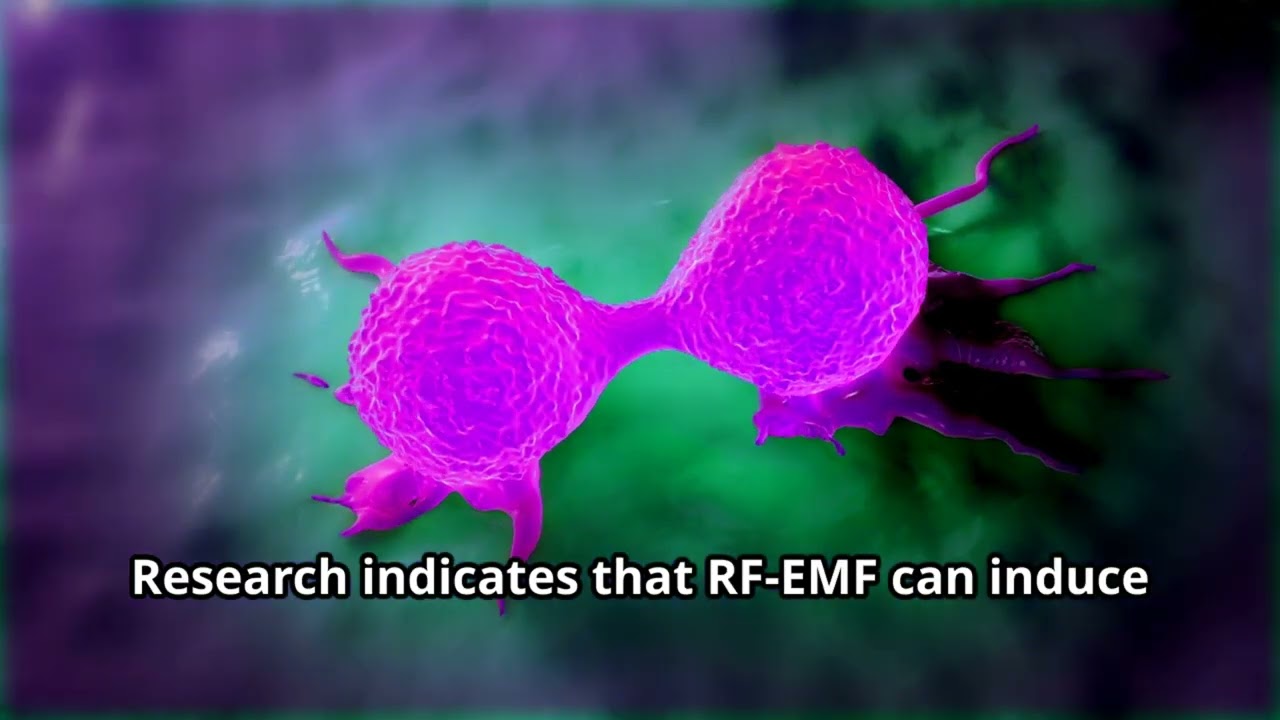“Existent literature points toward a yet untapped therapeutic potential of RF-EMF treatment which might aid in damaging cancer cells through bioelectrical and electromechanical molecular mechanisms while minimizing adverse effects on healthy tissue cells.”
In recent years, research into the effects of radiofrequency electromagnetic fields (RF-EMF) has revealed promising avenues for cancer treatment. This potential lies not in the heat generated by these fields but in their ability to interact with cancer cells at a molecular level.
Understanding RF-EMF and Its Non-Thermal Effects
What is RF-EMF?
RF-EMF covers a wide range of frequencies (3 kHz to 300 GHz), which includes frequencies used in communication devices, medical treatments, and industrial applications. While the thermal effects of RF-EMF are well-documented and used in treatments like hyperthermia therapy, recent studies have begun to uncover non-thermal effects that could be harnessed to target cancer cells specifically.
Non-Thermal Mechanisms
The review highlights several non-thermal mechanisms through which RF-EMF can impact cancer cells:
- Ion Channel Activation: RF-EMF can activate ion channels in cell membranes, leading to disruptions in cellular homeostasis.
- Altered Gene Expression: Exposure to RF-EMF can change the expression levels of various genes involved in cell cycle regulation, apoptosis, and stress responses.
- Membrane Potentials and Oscillations: RF-EMF can affect the electrical properties of cell membranes, leading to changes in cell behavior.
- Cytoskeletal Structure and Cell Morphology: RF-EMF can influence the structural components of cells, leading to altered cell shape and function.
Cancer Cell Susceptibility
Cancer cells possess specific characteristics that make them more susceptible to the effects of RF-EMF. These include:
- Aberrant Ion Channel Expression: Cancer cells often express ion channels differently from healthy cells, making them more vulnerable to RF-EMF-induced disruptions.
- Distinct Membrane Potentials: The unique electrical properties of cancer cell membranes can be targeted by RF-EMF.
- Altered membrane elasticities: May render them particularly susceptible to RF-EMF
- Mechanical Properties and Morphology: The structural abnormalities in cancer cells can be exploited by RF-EMF to induce cell damage.
Therapeutic Potential of RF-EMF
Anti-Cancer Effects
Research indicates that RF-EMF can induce several anti-cancer effects, including:
- Mitotic Arrest: RF-EMF can halt the division of cancer cells.
- Growth Inhibition: Exposure to RF-EMF can slow down or stop the growth of tumors.
- Autophagy and Apoptosis: RF-EMF can trigger self-destruction mechanisms in cancer cells, leading to their death.
Minimizing Damage to Healthy Cells
One of the most promising aspects of RF-EMF treatment is its ability to target cancer cells while sparing healthy tissue. This selective action is crucial for reducing side effects and improving patient outcomes.
Current Research and Future Directions
Combination Therapies
Studies have shown that RF-EMF can sensitize cancer cells to traditional therapies like chemotherapy and radiation. This combination approach can enhance the effectiveness of existing treatments, even at lower doses, thereby reducing adverse effects.
Clinical Relevance
Despite the technical challenges in applying RF-EMF therapy, especially in achieving the required temperatures for hyperthermia, the non-thermal effects present a viable alternative. This approach could lead to new treatment protocols that leverage the unique properties of RF-EMF.
Need for Continued Research
To fully realize the therapeutic potential of RF-EMF, further research is needed to determine the optimal frequencies, field intensities, and exposure durations for different types of cancer. Understanding these parameters will help in developing effective, targeted cancer treatments.
Conclusion
The untapped potential of RF-EMF treatment offers a promising new avenue for cancer therapy. By harnessing the bioelectrical and electromechanical effects of RF-EMF, we can develop treatments that specifically target cancer cells while minimizing harm to healthy tissue. Continued research in this field is essential to unlock these possibilities and improve outcomes for cancer patients.
References
- Literature Review: Potential Non-Thermal Molecular Effects of External Radiofrequency Electromagnetic Fields on Cancer, International Journal of Hyperthermia.








